OceanOne, a bimanual underwater humanoid robot with haptic feedback allows human pilots an unprecedented ability to explore the depths of the oceans in high fidelity. In collaboration with DRASSM, Ocean One embarked on the Andre Malraux to explore the wreck of La Lune, 100 meters below the Mediterranean. The flagship of King Louis XIV had sunk here, 20 miles off the southern coast of France, in 1664, and no human had explored its ruins – or the countless treasures and artifacts the ship once carried – in the centuries since it sank. On April 15, Ocean One recovered a grapefruit-size vase and returned it to the ship deck to the excitement of the archaeologists, engineers, and scientists who crowded around him. The expedition to La Lune was OceanOne's maiden voyage, and based on its astonishing success, it's hoped that the robot will one day take on highly-skilled underwater tasks too dangerous for human divers, as well as open up a whole new realm of ocean exploration.
OceanOne Lands on the Moon










The Team led by Oussama Khatib: Xiyang Yeh, Gerald Brantner, Brian Soe, Boyeon Kim, Shameek Ganguly, Mikael Jorda, Arjun V. Balasingam, Hannah Stuart, Mark Cutkosky, Shiquan Wang, Aaron Edsinger, Phillip Mullins, Mitchell Barham, Christian R. Voolstra, Khaled Nabil Salama, Michel L'Hour and Vincent Creuze.
At Stanford
 The concept for Ocean One was born from the need to study coral reefs deep in the Red Sea, far below the comfortable range of human divers. No existing robotic submarine could dive with the skill and care of a human diver.
The concept for Ocean One was born from the need to study coral reefs deep in the Red Sea, far below the comfortable range of human divers. No existing robotic submarine could dive with the skill and care of a human diver.
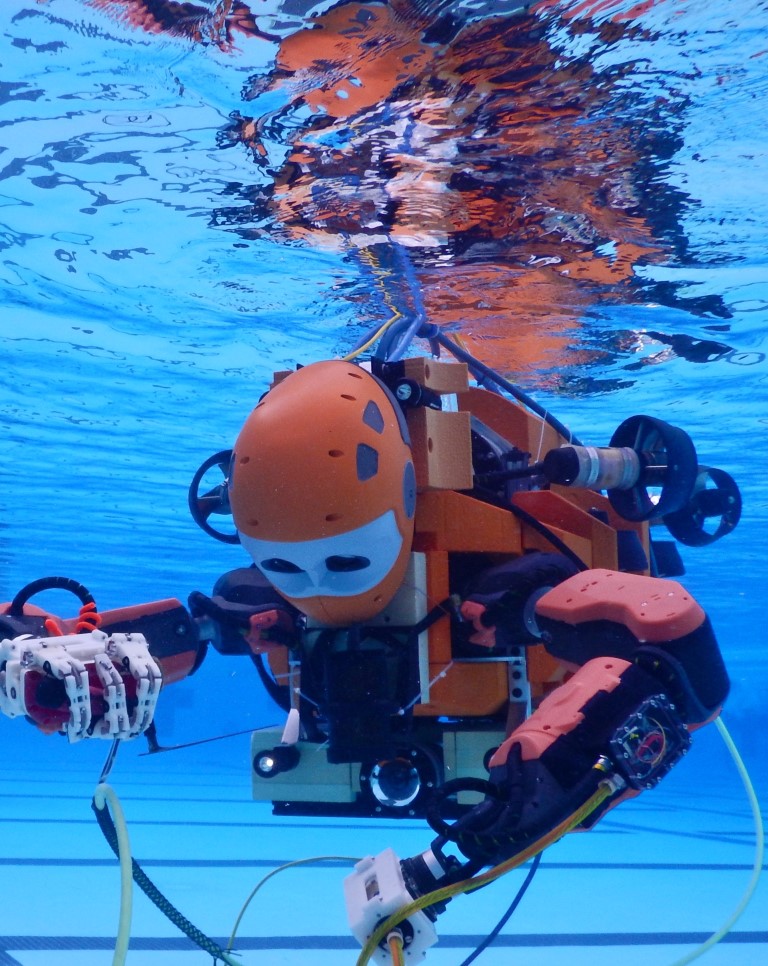 Ocean One looks something like a robo-mermaid. Roughly five feet long from end to end, it features stereoscopic vision, two fully articulated arms, and eight thrusters.
Ocean One looks something like a robo-mermaid. Roughly five feet long from end to end, it features stereoscopic vision, two fully articulated arms, and eight thrusters.
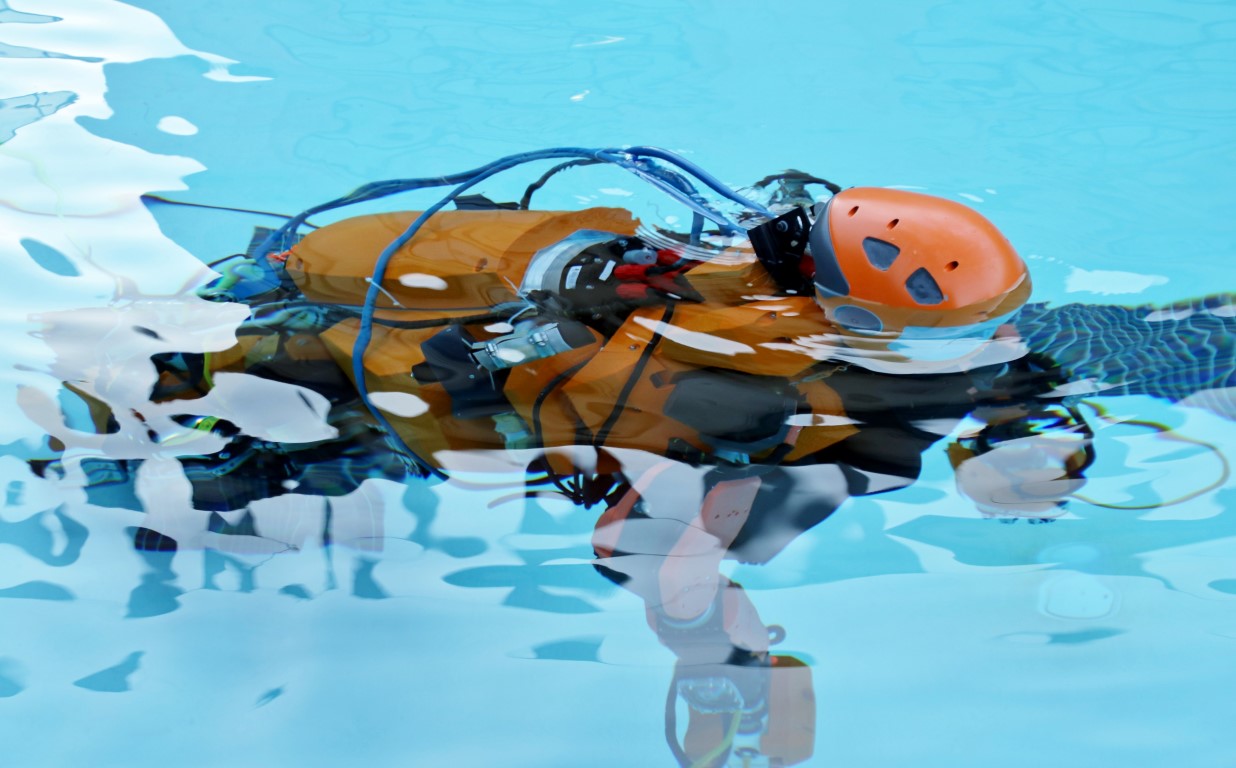 Ocean One will become the physical avatar, allowing humans to dive virtually, putting the human out of harm's way.
Ocean One will become the physical avatar, allowing humans to dive virtually, putting the human out of harm's way.
The Mission
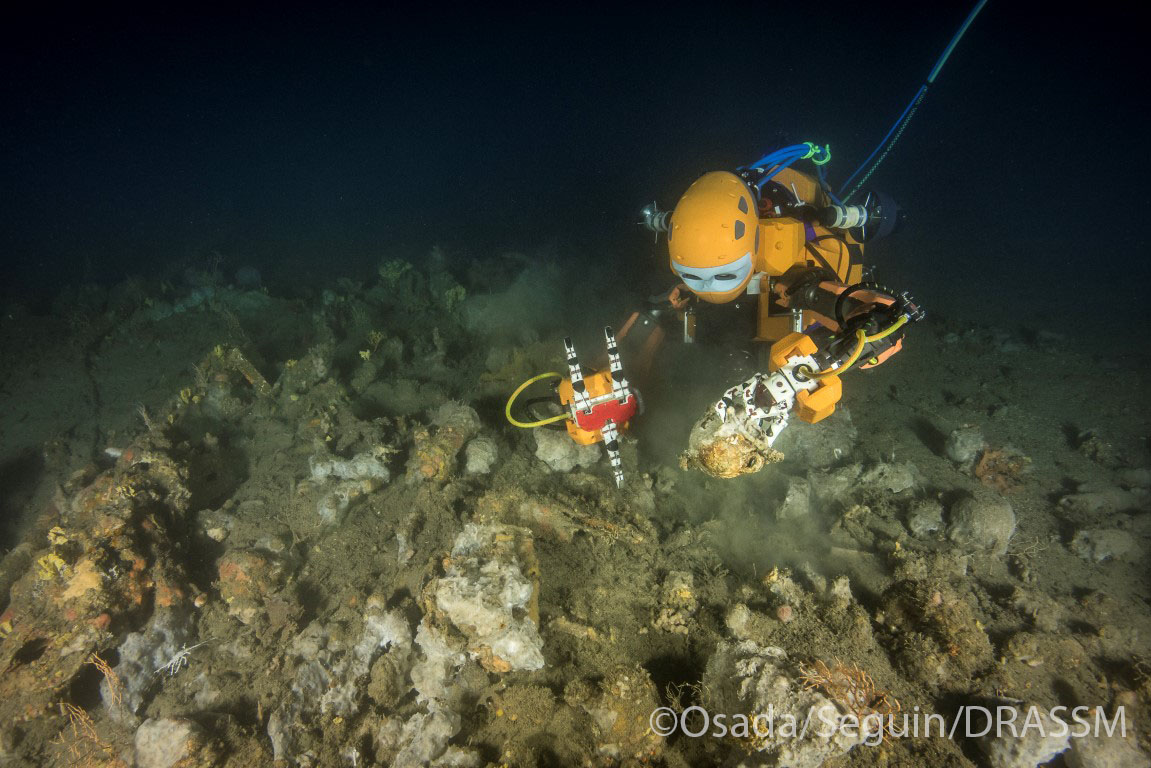 Each hand is fitted with force sensors that relay haptic feedback to the pilot's controls, so the human shares the sense of touch.
Each hand is fitted with force sensors that relay haptic feedback to the pilot's controls, so the human shares the sense of touch.
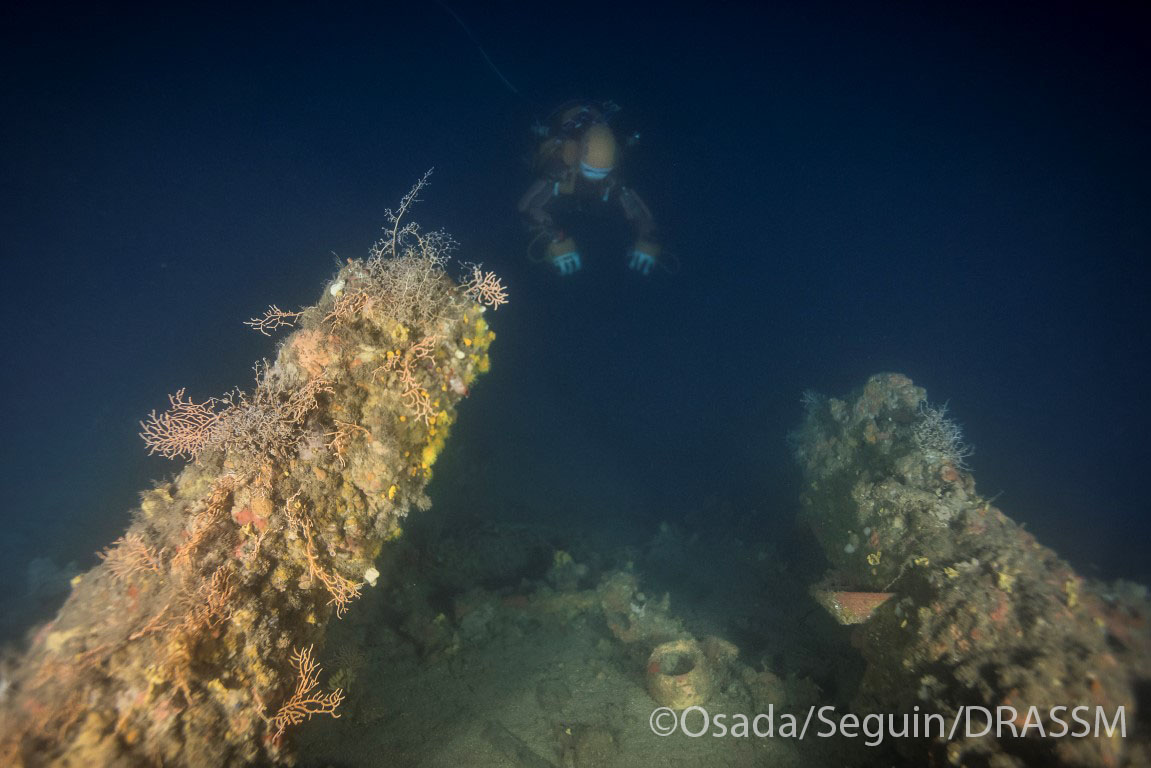 Ocean One swam between two cannons too closely. By performing a sort of pushup, the robot was free.
Ocean One swam between two cannons too closely. By performing a sort of pushup, the robot was free.
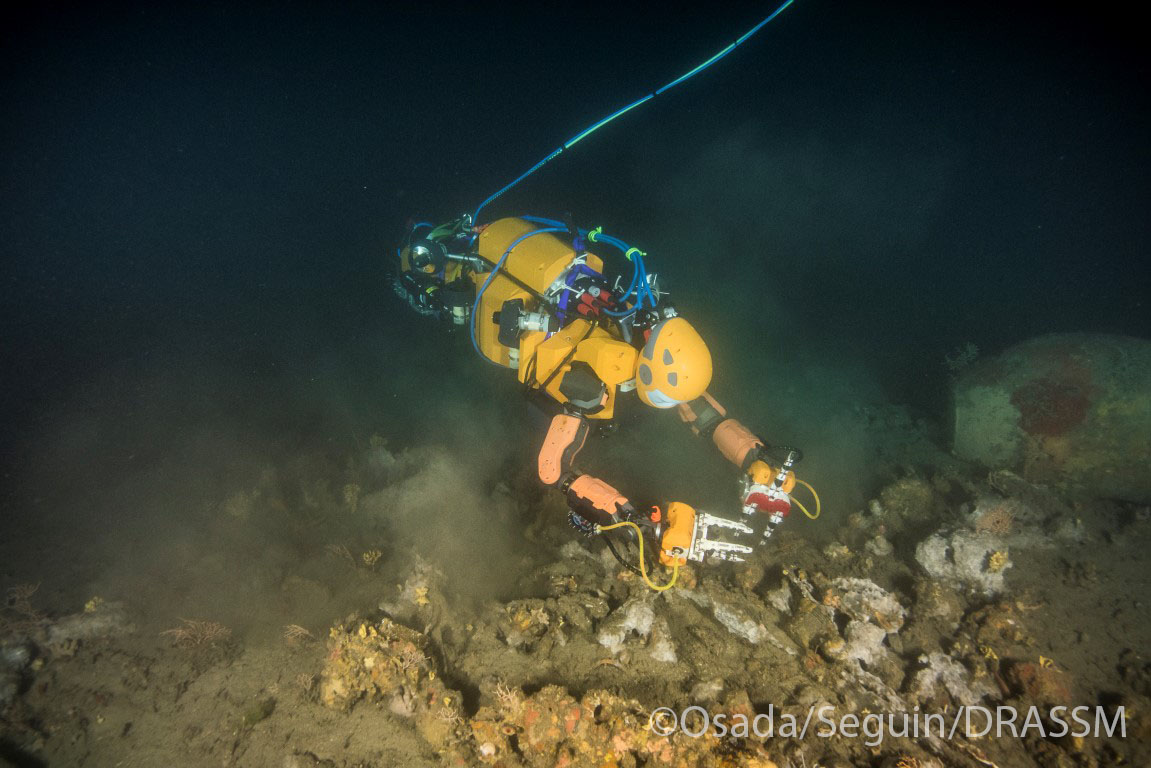 As the body moves and drifts, the arms adjust to keep its hands steady as it works.
As the body moves and drifts, the arms adjust to keep its hands steady as it works.
At Sea
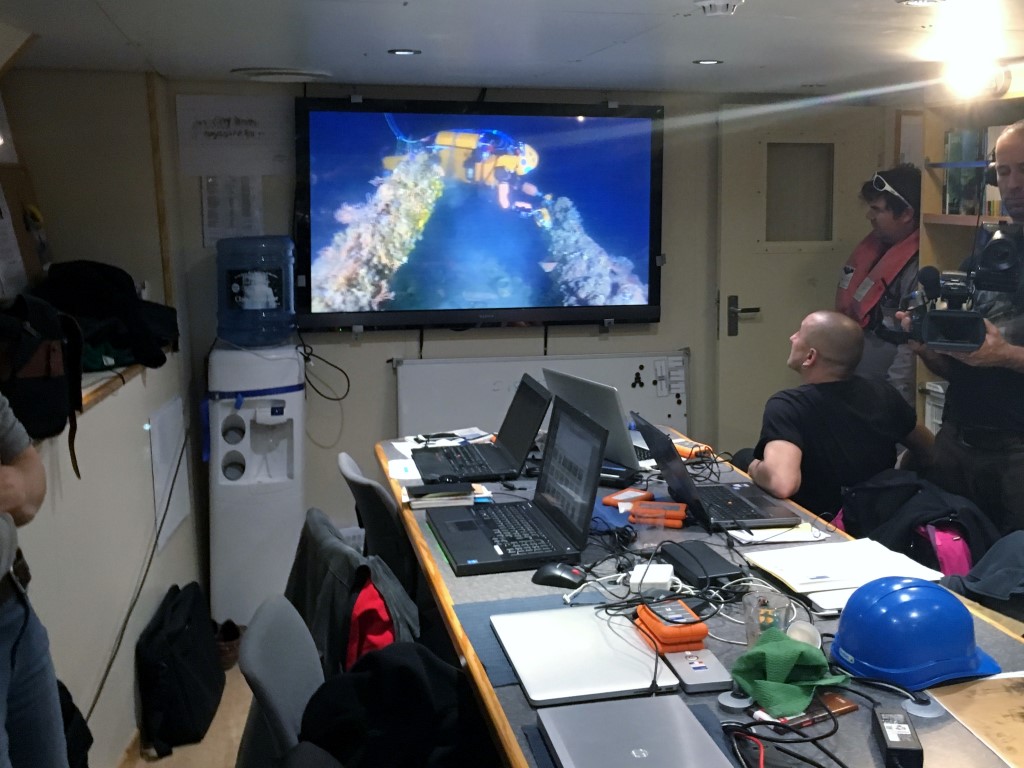 The human can provide the intuition and expertise and cognitive abilities to the robot, forming amazing synergy.
The human can provide the intuition and expertise and cognitive abilities to the robot, forming amazing synergy.
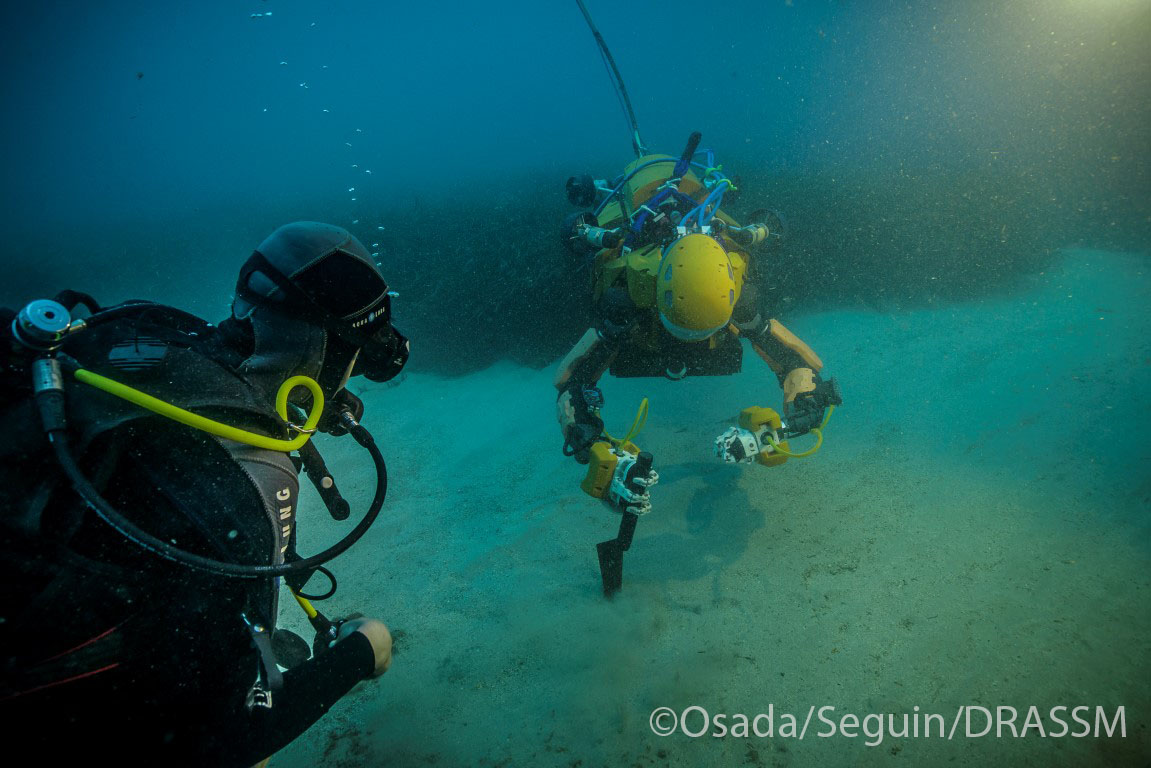 Its pilot can communicate through hand gestures during complex tasks or scientific experiments.
Its pilot can communicate through hand gestures during complex tasks or scientific experiments.
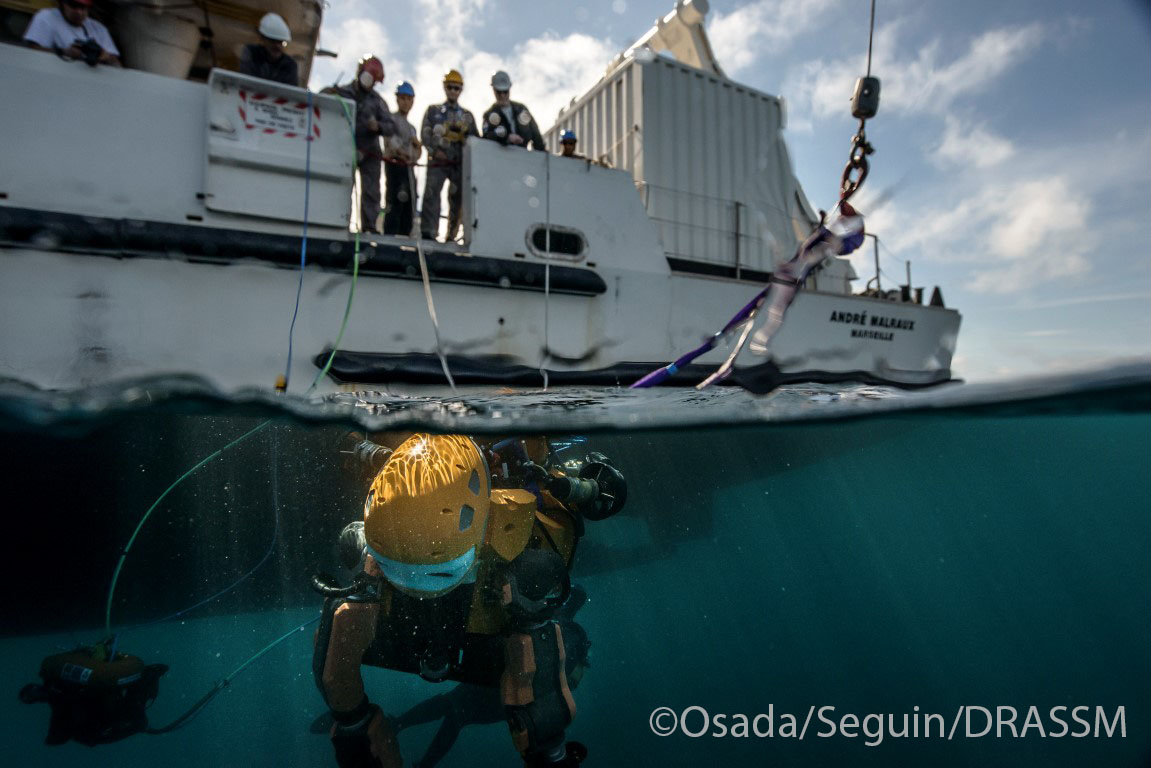 Ultimately, though, Ocean One was designed with an eye toward getting human divers out of harm's way.
Ultimately, though, Ocean One was designed with an eye toward getting human divers out of harm's way.
 Next month, Ocean One will return to Stanford campus, where the team will continue iterating on the platform
Next month, Ocean One will return to Stanford campus, where the team will continue iterating on the platform
News and Media
US
-
Stanford News
Maiden voyage of Stanford's humanoid robotic diver recovers treasures from King Louis XIV's wrecked flagship (Video)
-
IEEE Spectrum
Stanford's Humanoid Diving Robot Takes on Undersea Archaeology and Coral Reefs
-
New York Times
OceanOne, a Mer-Bot Dive Buddy With a ‘Friendly Face’
Engadget
Stanford's humanoid robot diver explores its first shipwreck. Behold: the dawn of the merbot.
Associated Press. The Big Story
France shows off humanoid underwater exploration robot
Engineering.com
Humanoid Robotic Diver Recovers Treasure from King Louis XIV's Flagship
CNN
'Robo-mermaid' finds treasure in ship that wrecked 350 years ago
Wired
Does This Terrifying Robot Really Have to Look Like a Mermaid?
The Guardian
Humanoid diving robot hunts for sunken treasure in French shipwreck
Robot Globe
OceanOne, Stanford's Humanoid Robot, Explores an Abandoned Shipwreck
gCaptain
Humanoid Robotic Diver OceanOne May Revolutionize Subsea Exploration
Archaeology
Humanoid Robot Dives on Seventeenth-Century Shipwreck
Newsy
This Robot Mermaid Is The New Way To Explore Oceans (Video)
Italy
La Repubblica
OceanOne, l'umanoide che rivoluzionerà le esplorazioni subacquee
Close-up Engineering Systems
L’umanoide subacqueo rivoluziona l’esplorazione dei fondali
Russia
Turkey
Mobil Yasam
Denizalti arastirmalari yapan dalgiç robot!
Kozan Demircan
Robot Dalgiç >> 2000 M'ye Dalan OceanOne Batık Şehirler Ve Mercan Resiflerini Araştıracak
Portugal
Poland
France
Le Monde
Archéologie: un robot humanoïde à la conquête des abysses
Futura-Sciences
Un robot humanoïde pour explorer l'océan par procuration
Sciences et Avenir
Ocean One, le robot humanoïde, archéologue et sous-marin, a exploré La Lune
Midi Libre
Ocean One, ce robot génial des abysses présenté à Marseille
France Inter
Ocean One à la découverte des grands fonds
20 Minutes
Marseille: Le robot plongeur Ocean One en avant-première mondiale (Video)
UK
DailyMail
The ‘robo-mermaid’ that recovered treasure from the wreck of King Louis XIV's ship: OceanOne lets you explore the sea remotely
International Business Times
Robot 'mermaid' recovers treasure from King Louis XIV shipwreck off the coast of France
Spain
Bajoelagua
Un robot humanoide revoluciona la arqueología submarina (Video)
El País
El humanoide que explora las profundidades de los océanos nadando como una sirena
Ticbeat
Así es el humanoide buceador creado en Stanford
Brazil
Pakistan
Iran
Arabic
AIT News
علماء في جامعة ستانفورد يطورون حورية بحر آلية
Al-Wasat News
علماء في جامعة ستانفورد يطورون حورية بحر آلية
Germany
Netherlands
© Stanford University, Stanford, California, USA. 94305.
Monochromed template from HTML5Templates